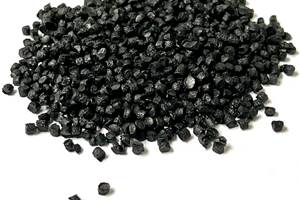Rapid Prototyping Advances With New Machines & Materials
Bigger parts, tighter accuracy, and new elastomeric materials are some of the latest advances in rapid-prototyping technology. Applications for the new developments range from basic concept modeling to functional testing to the burgeoning field of rapid tooling.
Closer tolerances
A new machine intended for the high-accuracy requirements of rapid tooling has been introduced by Sanders Design International of Wilton, N.H. Called Rapid PatternMaker (RPM), the machine uses four moveable print heads to build models layer by layer through an "ink-jet-style" selective deposition process. One head deposits the thermoplastic material in tiny droplets (75 micron diam.); another lays down a wax for support structures; and two additional heads are available for bulk filling the part's less detailed regions. The machine reportedly deposits material at linear rates of up to 20 in./sec. Resolution in the x and y axes is 0.0002 in., according to company specifications.
The RPM also includes two provisions to achieve uniform layer thickness. It has a milling head that planes each layer to thicknesses between 0.0005 to 0.005 in. Also, the digitally controlled build-table elevator is controllable to 0.000125 in. According to company president Al Hastbacka, these two features allow models to be built with variable slice thicknesses, which result in smoother contours, less "stair-stepping," and a surface finish as smooth as one micron RMS.
The RPM "makes the world's most accurate patterns," Hastbacka claims. As proof, he cites a study in which a standardized part used for benchmarking stereolithography ("SLA User Group Benchmark Test Part") was produced on an RPM and also was CNC machined in aluminum. When compared by a coordinate measuring machine, two RPM parts--one hot off the RPM and another aged four months--achieved accuracies better than 0.05% of feature size, Hastbacka reports. "That's better than CNC machining," he claims.
Maximum build volume for the new RPM machine is a 12-in. cube. The material reservoir holds materials for 72 hr of continuous run time, and the machine controller can be set for unmanned operation.
Stretch your materials
For those who want their prototypes in an elastomeric material, DTM Corp. of Austin, Texas, now has a elastomeric material for use with the company's selective laser sintering (SLS) systems. The material, Somos 201 from DSM Desotech, can be used to make a variety of functional prototypes that demand an elastomer. Automotive hoses, gaskets, and door seals are some examples.
Build bigger parts
The latest "3D printer" or concept modeler from Stratasys Inc. of Eden Prairie, Minn., features a 50% larger build envelope than the company's Genisys unit, which creates models from a polyester material. The new Genisys Xs builds parts up to 12 x 8 x 8 in.
New Extrudable Paste Helps Build Large Models
A new modeling paste from the Adhesives and Tooling Group of Ciba Specialty Chemicals, East Lansing, Mich., is designed to reduce cost and increase accuracy in making large master models for aerospace, automotive, marine, and other transportation industries. RP 4503 R/H paste is a two-component system formulated for fast application using high-output meter/mix equipment. After curing for 24 hr, it is easily machined to a seamless surface without the bond lines seen on models machined from boards.
The paste exhibits low shrinkage (0.002 in./in.) and low coefficient of thermal expansion (32 x 10-6 in./in./°F), enabling it to produce large models that hold close tolerances even when exposed to ambient-temperature extremes, Ciba says. The paste is also said to be virtually odorless and easier to work with than other modeling materials, so it requires less training of personnel who make the rough model build-up.
Related Content
General Polymers Thermoplastics to Further Expand Distribution Business
NPE2024: Following the company’s recent partnership buyout, new North American geographic territories are in its sight.
Read MoreNoncrosslinking TPEs for Cold, Warm, Hot Water
Thermolast DW compounds are aimed at seals and sanitary components that come in contact with hot water.
Read MoreHybrid EPDM-TPE Adhesion Compounds for Automotive Industry
Kraiburg’s new compounds targeted to auto sealing and exterior sector applications and toolmakers.
Read MoreTPE Made with 50% PCR Derived from End-of-Life Tires
Prism Worldwide has commercialized its first TPE with this type of recycled content based on its patented technology.
Read MoreRead Next
Lead the Conversation, Change the Conversation
Coverage of single-use plastics can be both misleading and demoralizing. Here are 10 tips for changing the perception of the plastics industry at your company and in your community.
Read MorePeople 4.0 – How to Get Buy-In from Your Staff for Industry 4.0 Systems
Implementing a production monitoring system as the foundation of a ‘smart factory’ is about integrating people with new technology as much as it is about integrating machines and computers. Here are tips from a company that has gone through the process.
Read More


















